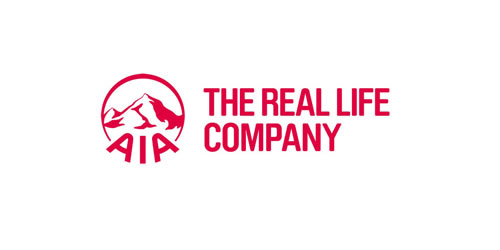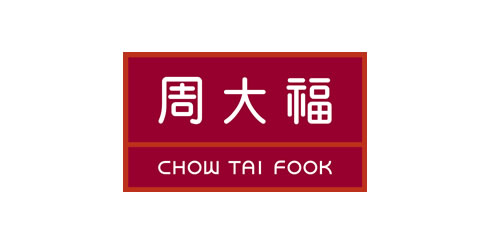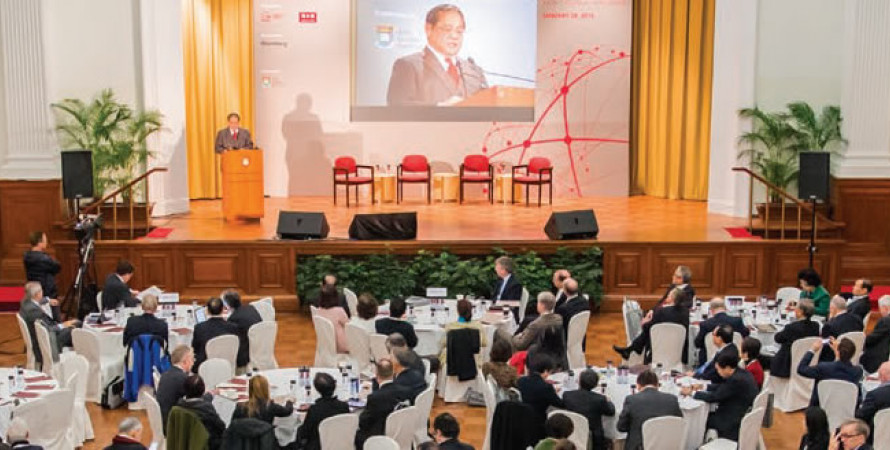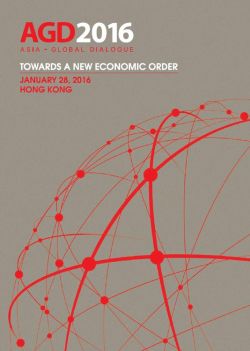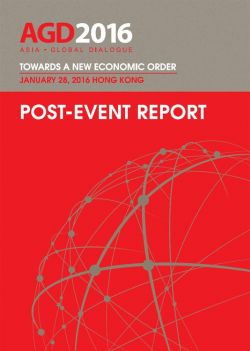AGD 2016: Towards a New Economic Order
AsiaGlobal Dialogue 2016: Towards a New Economic Order took place on January 28, 2016 in Hong Kong. It marked the first time that AGD was held by the Asia Global Institute at The University of Hong Kong. AGD 2016 looked at how business might be a positive and dynamic agent of change as the global economy rebalances to the East. The event provided plenty of opportunities for delegates from around the world to exchange ideas on different aspects of the emerging global economy.
Distinguished speakers at the event include Chairman of the Board of Trustees of the Group of Thirty Jacob Frenkel, New Economic Thinking President Robert Johnson, Suntory Holdings President and Chief Executive Officer Takeshi Niinami, AGI Distinguished Fellow Andrew Sheng, HSBC Chief Executive for Greater China Helen Wong, and Ayala Corporation Chairman and CEO Jaime Augusto Zobel de Ayala II.
Videos
Highlights
-
Opening Remarks
-
Towards a New Economic Order
-
New International Monetary Order
-
Transformation Through Technology and Innovation
-
Central Banking – Unconventional Solutions to Unconventional Policies?
-
Session 1a: Growth Beyond Numbers
-
Session 1b: The Economy, Sustainability and Human Development (Room 218)
-
Session 2a: Advancing the Cause of Global Trade (Room G07)
-
Session 2b: China's Belt and Road Initiative (Room 218)
-
The Impact of Technology on Jobs and Growth
Opening Remarks
Peter Mathieson
Peter Mathieson
Former President and Vice-Chancellor The University of Hong Kong
Victor K Fung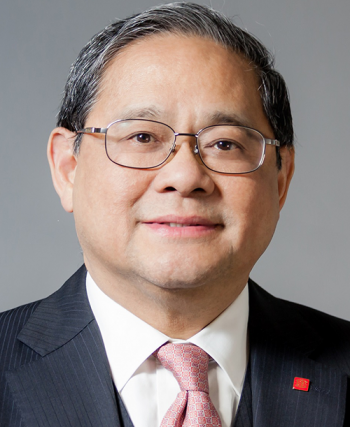
Victor K Fung
Chairman, Asia Global InstituteExcerpts of remarks delivered at the Welcome
We at The University of Hong Kong, are very proud to have the Asia Global Institute as part of the university. We’re very excited about the possibilities that this brings to the university, and the Asia-Global Dialogue which is the signature event of the Asia Global Institute is a great way to publicly launch the institute.
HKU has, as its mission, what we call four "I’s" – there are 3 I’s which converge on a fourth "I" and those are – Internationalization, Interdisciplinarity, and Innovation, all of which converge on Impact. These four principles have become the headings under which the university should base its future, and each of those words apply to the activities of the AGI, and indeed to the Asia-Global Dialogue. So there is a great interest within the university in today’s meeting, and also the directions that today’s meeting will set for us.
This is a particularly important occasion because it is the first AGD to be held by the Asia Global Institute (AGI), the successor institution to the Fung Global Institute.
AGI's focus is fundamentally interdisciplinary, reflecting the great complexity of the issues and challenges facing the world. Its primary orientation is concentrated on the region, as encapsulated in the wording accompanying the Institute’s tagline: “Asian Perspectives Global Issues.” The association with the university ensures access to the first-class research minds of scholars who care about policy and the real world. At the same time, AGI has deep associations with eminent scholars from around the globe, the business community, and the world of policy. This ensures that the hallmark of AGI’s research is relevant.
Today's sessions will look at the new monetary order and central banking, the role of technology and innovation, sources of growth, sustainability and human development, international trade, and China’s One Belt One Road Initiative.
AGI welcomes its distinguished speakers from academia, business, multilateral organizations, and civil society from Hong Kong, China, and other parts of Asia, as well as from Europe and the United States to the event.
Towards a New Economic Order
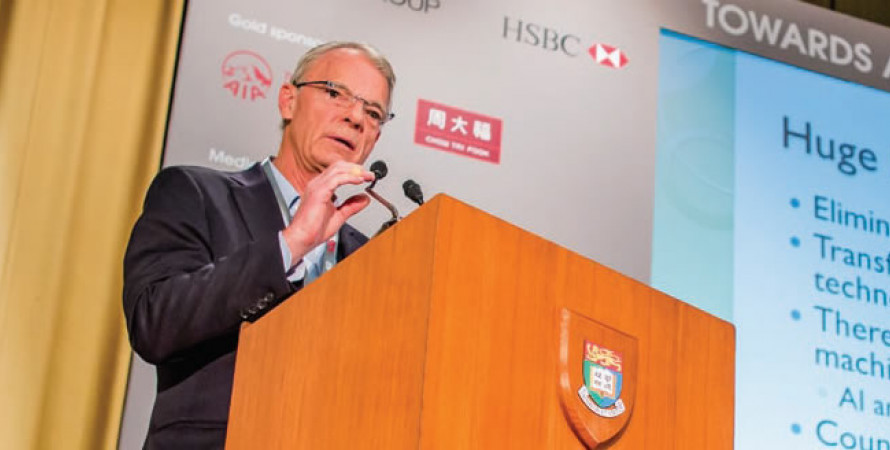 Michael Spence
Michael Spence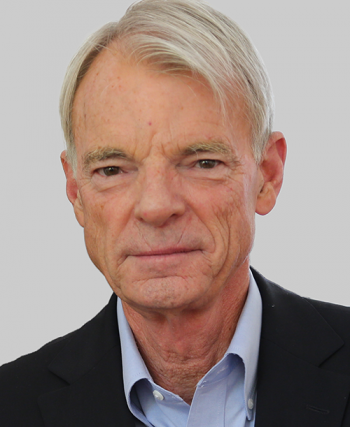
Michael Spence
Nobel Laureate Chairman, Advisory Board, Asia Global Institute“There is huge potential to eliminate poverty and to transform economies through technologies. There has been enormous breakthrough in artificial intelligence and machine learning in the last decade. We also have the potential to effectively counter the antiinclusiveness forces that happened in a lot of our economies. But all these will take a big effort.”
AGI Academic Council Chairman Michael Spence and HSBC Deputy Chairman and Chief Executive, Asia Pacific Peter Wong Tung Shun delivered the keynote address for AGD 2016.
Excerpts of remarks delivered by HSBC Deputy Chairman and Chief Executive, Asia Pacific Peter Wong Tung Shun.
HSBC has been a long-standing supporter of the aims of the Institute, and we are very glad to be able to reaffirm that support today. The Institute does great service as Asia’s representative on the global academic stage. It provides a uniquely Asian voice in the biggest policy debates of our time – tackling the many economic, political and technological issues that we face. It challenges assumptions – both in Asia and elsewhere – about the solutions to national and global problems. And above all, it is an invaluable counter-weight to the easy consensus that can develop when conclusions go unchallenged, and strands of opinion are unaccounted for.
At a time when Asia commands an unmatched prominence in global affairs, the AGI is helping to ensure that Asia’s voice is as loud and influential as its actions. HSBC is both proud and privileged to have played a part in the Institute’s development and to continue to help it in its mission today.
The theme of this year’s Asia-Global Dialogue is very apposite.
There is no question that we are moving towards a new global economic order. In just the last month or so, the inclusion of the RMB in the IMF’s Special Drawing Rights basket, the formal launch of the AIIB, and the start of China’s presidency of the G20 have all illustrated the extent to which the global center of gravity is shifting. The response of global markets to currency fluctuations and a cooling Asian economy have starkly demonstrated the extent to which Asia is now integrated into the global financial system. Traditional trade patterns continue to be redrawn and the global response to climate change gathers pace, re-galvanized by China’s active participation. Technological advances are changing the way that we live and work. Governments, businesses and communities are striving to adapt both to the new demands that are placed on them and the new opportunities that this changing world presents.
These developments are posing fresh questions every day, and we all have a duty to contribute whatever expertise we can during this highly transformative
AGI Academic Council Chairman Michael Spence delivered the keynote address for AGD 2016, where he identified the key issues of our time.
There is confusion over outlook, growth patterns are not resilient
Our economies are growing in a manner that is neither sustainable nor inclusive. Public and private investments are way below the levels that are needed and leverage is rising. We have increased the gross leverage of the global economy by 57 trillion dollars yet we have, in various spots, higher unemployment. We have high and rising wealth and income inequality in most places. While monetary policy has certainly saved us, we have also managed to elevate asset prices, causing a divergence with real economy performance. The impact on monetary policy of an asset crisis has ran out of steam; we are even in a position where we might have a reset.
This is a time of confusion. Technology is promising but it seems only accessible by people in the middle classes. There are fears of robots replacing 30 per cent of the workforce in developed countries; the stock market is declining. But making a transition would be easier if we make the effort to restore resilient growth patterns at the same time.
… but there are also factors suggesting hopeful changes
There is huge potential to eliminate poverty and to transform economies through technologies. There has been enormous breakthrough in artificial intelligence and machine learning in the last decade. We also have the potential to effectively counter the antiinclusiveness forces that happened in a lot of our economies. But all these will take a big effort. For example, economic and social performance needs to be measured more effectively in a multi-dimensional fashion, and the world should not focus exclusively on economic growth and per capita GDP. Most of those non-sustainable growth patterns have to be reversed. Making the transition would be easier if efforts are made to restore resilient growth patterns.
Effort and good leadership are needed to restore resilient growth patterns
The journey getting there from where we are now is going to be lengthy and complex. There are very big lags between the recognition of potential for some of these technologies, and their actual realization. It will require significant changes in mindsets and organizational forms including business ones, especially where the patterns of investment in human capital are concerned.
Presently the world is not on the path to do this well. It is a global project and it is far from clear that existing institutions of governance are up to the task.
China, Asia can have an impact in creating resilient growth for the world economy
For resilient growth patterns to be restored, significant changes are required at local, subnational, national, and significantly, also at global level.
For instance, China, as a country has made significant movements in this direction. It understands this growth model through experience. It has created institutions that were mentioned before, such as the Belt and Road Initiative and the Asian Infrastructure Investment Bank. There have been attempts to raise the levels of investment in Central, East, South Asia, & West Africa, starting on an international basis. There are hopes that China can use its G20 presidency to try and bring at least some of the pieces into place that would reduce or change the way we go about dealing with inclusiveness and sustainable growth patterns.
One way to look at this world is that everyone is dragging everyone else down. The network structure of this global economy is different from what it was 20 years ago. Economies in the world are now interdependent. The flip side of that coin is that more effective growth strategies across a range of countries and regions will have a positive impact on each other, reinforcing the transition to more
New International Monetary Order
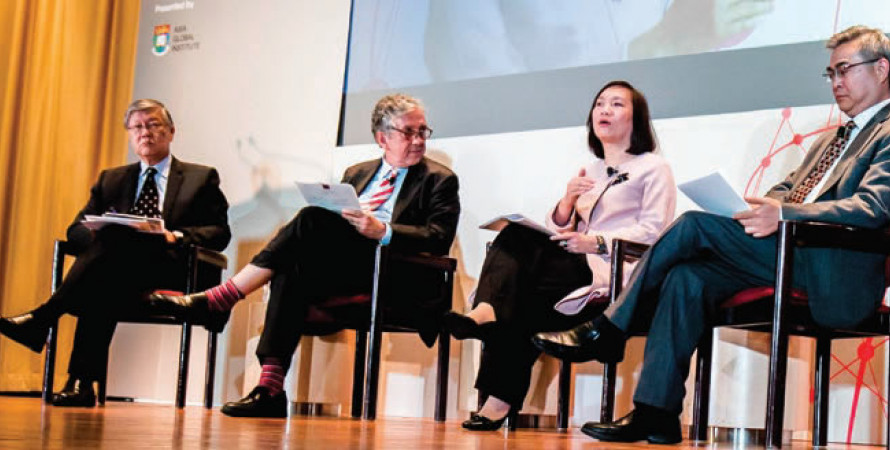 Andrew Sheng
Andrew Sheng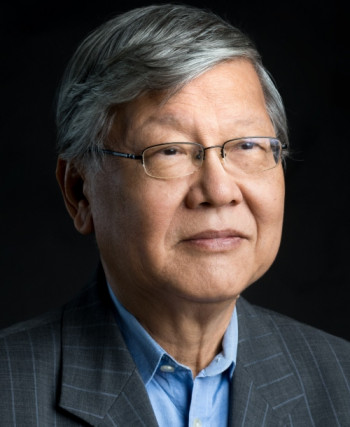
Andrew Sheng
Distinguished Fellow, Asia Global Institute
Helen Wong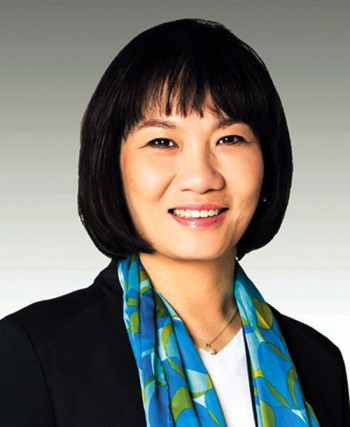
Helen Wong
Chief Executive, Greater China, HSBC
Geng Xiao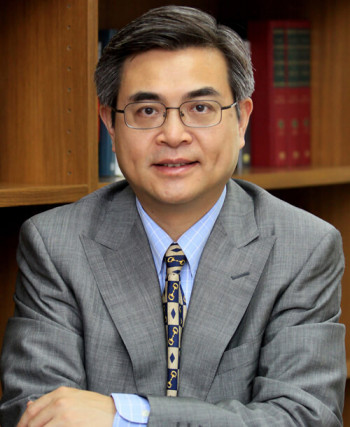
Geng Xiao
Director of Research and Senior Fellow, Fung Global Institute“There are still a lot of adjustments confronting us that will stress both China and the rest of the world. The challenge is how to make the most of that particular challenge.”
“...we are seeing the phenomenal rise of approximately 40 per cent of mankind into the middle class. Today the middle class, particularly the young in Asia, know about much more, move at high speeds, and are globally connected.”
Institute for New Economic Thinking President Robert Johnson, HSBC Chief Executive for Greater China Helen Wong, and HKU Professor Xiao Geng speak to the topic of changes to the global monetary order. Moderated by AGI Distinguished Fellow Andrew Sheng.
The world is changing at a rapid pace- but global finance has not kept up
In the 19th century, it can be said that the world was highly integrated under the British Empire. A thriving maritime trading system supported the sterling’s nascent efforts to become a global currency while on land, the silk road had taken off, linking east and west.
Fast forward to the latter half of the 20th century, the world saw trade and finance represent a quarter of global GDP and today, global finance is now at nine times global trade and four times that of world GDP. the digital share of trade and capital flows is also rising very rapidly.
Amid all this, we are seeing the phenomenal rise of approximately 40 per cent of mankind rising into the middle class. Today, the middle class, particularly the young in Asia, know about much more, move in high-speed, and are globally connected. Yet we continue to live in a uni-polar system which was brought about as a result of the Breton Woods Agreement which was reached in 1944; this is the same system which also saw the birth of the IMF and the World Bank. These institutions are now being challenged.
Threats to the old financial order
There are a number of threats to the old financial order. Firstly, there is profound financial deepening seen in emerging and developing economies, particularly within the Asian subset of that group. As an example, an estimated 84% of growth assets and 78% of growth liabilities in these countries have occurred in the last fifteen years, so we are looking at a very different structure of interdependence through finance—and finance in the age of digital communication is not well-anchored.
Secondly, the world is dealing with a system of insufficient aggregate demand even as it tries to draw in China, which is the largest economy in the world. There are still a lot of adjustments in front of us which will stress both China and the rest of the world. The challenge is how to make the most of that particular challenge.
Politics has thus far hampered the response of multi-lateral institutions to these changes. A dysfunctional U.S. political system has hampered America’s ability to put forward a constructive solution to adjusting multi-lateral institutions so they reflect China’s rise. Isolating China may be good marketing in America, but it is a dreadful policy to pursue, and this institutional evolution is bound to bring stress to the financial markets.
China’s rise can benefit the region
China’s role in the international arena began with the internationalization of the RMB. From a psychological standpoint, the RMB’s inclusion into the IMF’s Special Drawing Rights basket is critical because this inclusion should give companies, institutions, and investors around the world the confidence to use the RMB to settle trade and investments—this will ultimately lead the RMB to become a reserve currency.
But the currency still has a long way to go. Until November 2015, Swift data shows RMB use only constitutes 2.28 per cent of world global payments, while the U.S. dollar is used in more than 40 per cent of all payments; the Euro is almost at 30 per cent. So there is still a long way to go. The room for the RMB to become an international currency is big, but volatility and concerns about capital outflows have created new challenges for China’s financial policy makers.
For more than half a century, the international monetary order was dominated by institutions such as the IMF and the World Bank, and later by the Asian Development Bank. China’s rise and the establishment of the Asian Infrastructure Investment Bank (AIIB) will provide better access to China and to other emerging markets which are linked by the Belt and Road Initiative as well.
Asia remains a global growth hub. In 2016, HSBC expects China’s growth to be at 7.7 per cent; India’s growth will be at 7.4 per cent, and 4.2% for the ASEAN 6, or that region’s six biggest economies. Asia is where opportunities are.
… but it needs to fix its own problems.
The low interest rate regime adopted by Central Banks around the world may have brought an end to the Global Financial Crisis, but the policy also encouraged problems with non-performing investments and overcapacity within China to arise and intensify. A Beijing attempt to head these problems off has put a damper on the country’s economic growth, and we are now seeing stresses triggered by this slowdown and from the capital flight.
Transformation Through Technology and Innovation
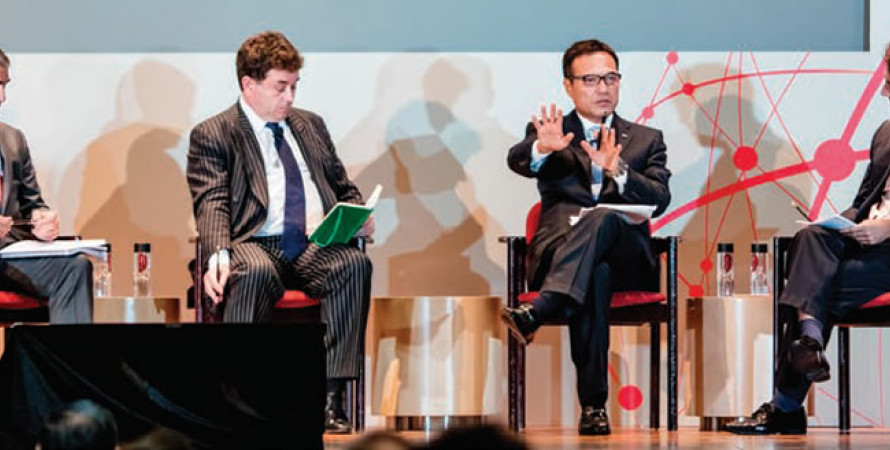 Jaime Zobel de Ayala
Jaime Zobel de Ayala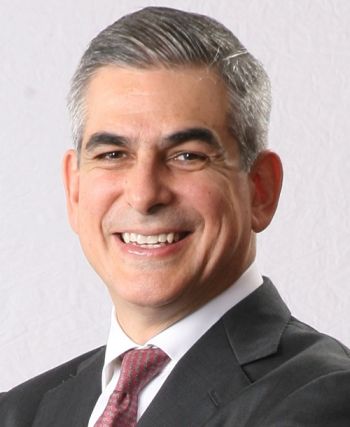
Jaime Zobel de Ayala
Chairman and CEO Ayala Corporation
Richard Dobbs
Richard Dobbs
Director, McKinsey Global Institute
Takeshi Niinami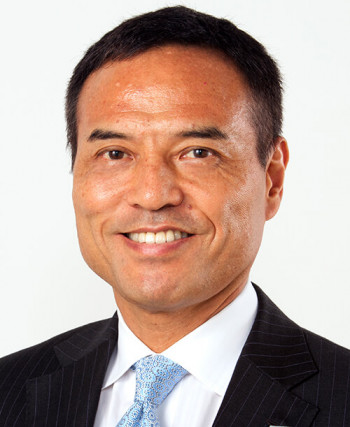
Takeshi Niinami
Chief Executive Officer, Suntory Holdings Limited
Napoloen Biggs
Napoloen Biggs
Co-Founder, Purecomm“Business should keep its peripheral vision open to discover opportunities in other industries. The question is ‘What might we learn from the other industries that is of interest to our group?’”
Suntory Holdings President and Chief Executive Officer Takeshi Niinami, Ayala Corporation Chairman and CEO Jaime Augusto Zobel de Ayala II, and McKinsey Global Institute's Richard Dobbs discuss the impact of technology on human society and how this has changed and evolved as a result. Moderated by Purecomm Co-founder Napoleon Biggs.
Humans are adapting to technology as quickly as it develops
Technology has been a disruptor for hundreds of years; what we are seeing today is the acceleration of technological shifts. We saw 500 years between the development of the first printing press and the first computer printer and just 30 years between the first computer printer and the first 3D printer. We saw 5,000 years between the development of the horse and the cart and the car, and just 130 years between the car and the self-driving car.
We are also seeing a rapid acceleration in the way technology has both evolved and has been adopted. It took 75 years before 100 million people took to the telephone; 38 years for the same number to adopt the radio and 13 years for the same number to take up the TV. Facebook needed a year to reach 15 million people; and Angry Birds 4 just 35 days to reach that 15 million audience number
Key areas of society are unable to keep up with this rapid change
The education system is going through a massive disruption. Some countries have experienced the benefits of a boom which has benefitted the private sector economy, but this has also left the public sector, and its educational system, struggling to meet demand. As a result, people whose educational attainment doesn’t match the needs of the existing job market are getting left behind.
When secondary school graduates leave school and enter jobs in areas like business processing centers, they are actually not ready. These fresh graduates need at least half a year's training. Providing this is not just a good business idea, it also helps with the country’s development. The idea is to hijack the last year of high school/ secondary school and, with the support of education officials, get the students ready to enter the workforce rather than follow the traditional curriculum. This way, their levels of engagement and ability to work improve exponentially.
Another hurdle is regulatory. The capacity for people to adjust is the key. The private sector may be malleable and can adjust quickly, but the public sector needs more time to adjust. It has less incentive to change and adapt, so the public sector tends to be a little bit rigid and formal. As a result, the entire regulatory structure moves and reacts more slowly. Whether or not a company goes global, there is going to be tension between private sector initiatives and the public sector which is trying to catch up on regulatory updates.
There are great business opportunities for the private sector to engage in the educational space. Businesses should keep its peripheral vision open to discover opportunities in other industries. The question is: "What might we learn from the other industries that is of interest to our group?"
Artificial Intelligence can’t do everything
There is only a slight risk that artificial intelligence (AI) will threaten human life in the way that it does in the movies, but it will pose a big risk to jobs. It is a fact that jobs will be replaced faster than the pace of retraining people and creating new positions.
About 30 to 40 per cent of activities will be replaced by machines in the next 10 to 15 years, and during that time, we will see workers being replaced by AI. We are going to see a growing underclass of disenfranchised workers.
One example of this is the impact created by the rise of a self-driving car. About 2.5 million people in the U.S. drive for a living. They drive trucks, buses, and taxis. Most of these drivers left the educational system when they were in high school, and they are the ones that are threatened by this new technology.
Most people with college educations are most likely to have, or find jobs that are suitable for them. But those who have left high school could lose their jobs to machines. And while technology opens up huge opportunities such as 24-hour services, the downside is that jobs for unskilled labor are going to disappear.
Further, while technology is increasing productivity, it cannot make moral decisions on a human’s behalf. Humans still need to see through human eyes. With regard to ethical issues, AI is unable to make judgments, and humans ultimately have to make decisions.
Data protection and security remains a controversial issue
While more executives see the opportunities brought about by the use of data, many corporate boards around the world are in the dark about data security. There are many cases where companies get hacked by governments, quasi-government intelligence, and sometimes nonintelligence groups. Data security is not very advanced in areas like the healthcare space, but this is not true of the financial industry space. In order to access data and get analytics, networks are increasingly becoming more sophisticated. If anything goes wrong with this network, we cannot do any of the things we are doing now, and we cannot live without those connected networks. What happens when these systems fail? Hacking incidents may be serious, but for now their impact is limited. What happens when control over the entire system breaks down? While these concerns shouldn’t hold people back from innovating, we also need to consider data protection and security at a different level.
Central Banking – Unconventional Solutions to Unconventional Policies?
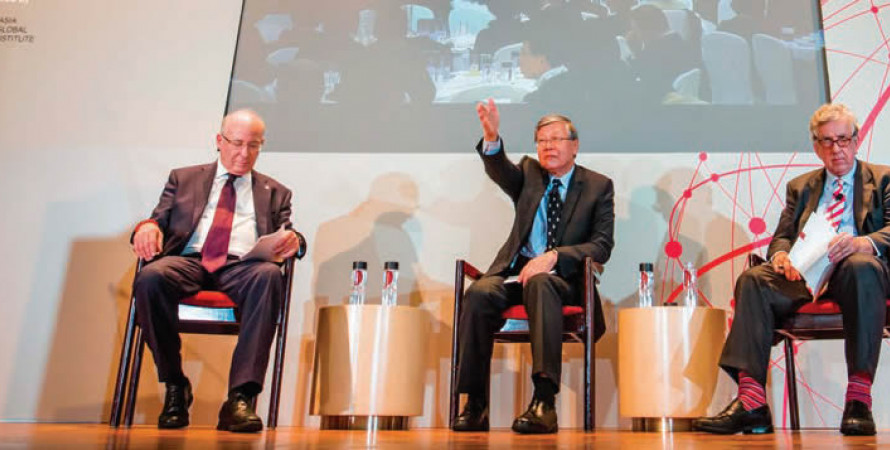 Jacob Frenkel
Jacob Frenkel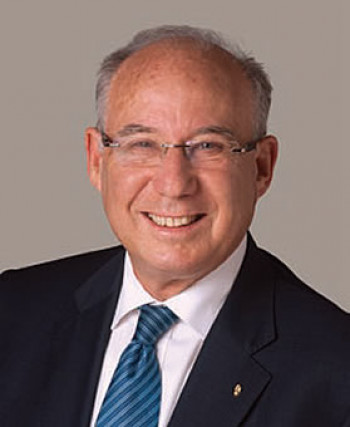
Jacob Frenkel
Chairman of the Board of Trustees, Group of Thirty
Andrew Sheng
Andrew Sheng
Distinguished Fellow, Asia Global InstituteFinancial markets are occasionally a mirror of the economy, occasionally an indicator of the real economy, and occasionally they are completely unrelated to the real economy. Financial markets play a very important function when they function. They can be very distorting when they are distorted.
Chairman of the Group of Thirty Board of Trustees Jacob A Frenkel shares his views on how unconventional central banking policies are shaping global economies in a conversation with AGI Distinguished Fellow Andrew Sheng and President of the Institute for New Economic Thinking Robert Johnson.
Real-time news doesn’t always reflect the real economy
The sense at the Davos World Economic Forum this year was one of complete confusion. The sentiment was worse than it was in 2009, and possibly the worst it’s been in 30 years. There was much rapid reporting of negative financial news.
However, one should keep in mind the fact that the real economy is a very heavy tanker, and does not change at the same pace as financial markets. Financial markets are occasionally a mirror of the economy, occasionally an indicator of the real economy, and occasionally they are completely unrelated to the real economy. Financial markets play a very important function when they function. They can be very distorting when they are distorted.
It is important to be aware of financial markets, as they can be extremely valuable to the real economy. But it would be a mistake to base one's assessment on the real economy exclusively through the lens of financial markets. The real economy reflects Mark Twain's dictum on Wagner's music: "it is actually better than it sounds."
Unconventional can become conventional
When the G20 met in London in 2008, they made one important decision: to give license and resources to a program of quantitative easing (QE), and for the use of unconventional monetary policies. This plan succeeded in putting a floor underneath the world, which was collapsing.
When the phrase "unconventional monetary policy" was coined, it implied that something was an aberration, and that policy would revert to the conventional. Nobody remotely believed that the unconventional strategy would become the paradigm for the eight years that followed. Only now does one talk about exiting a strategy which started with a tiny interest rate move in December 2015.
The fact of the matter is that we have gone into the unchartered territory of unconventional policy, and the longer the unconventional is practiced, the more conventional it becomes. There are distortions that arise when an economy is forced to have practically zero interest rates. People will chase after yields somewhere else, and the somewhere else means higher risk. More risk, more return, more risk.
This risk is not always properly priced, because it is not always apparent. The Bank of International Settlements just came out with a very interesting study on this. One point they make is that resources are pushed to activities that are stimulated by the low interest rate, and these activities happen to be of low productivity, like housing construction. Basically, one creates a new equilibrium with something which has low productivity, because you have expanded those unproductive sectors.
Then comes the second damage of the undoing. The undoing of an excess expansion in that particular sector almost invariably happens with noise. Very few bubbles are created in an environment of high interest rates – most of the bubbles occur when interest rates are very low. So we need to price the cost of delaying normalization.
Monetary policy can be a potent catalyst
The effectiveness of monetary policy itself depends very much on two major factors. First, the strength of a country's financial system, in particular the banking system, because that’s the mechanism by which monetary policy is imparted on the real economy. Second, the flexibility of the real economy, so that once monetary policy is implemented, it has the intended consequence.
It is in this regard that the U.S. is in the best place. The U.S. banking system, especially after the crisis, has strengthened itself significantly. More capital, less leverage, everything that we are talking about. And the U.S. economy is more flexible than other countries' economies.
In Europe, in a very similar vein you are asking yourself: how come Germany has the best performance? How come unemployment is 4.5 per cent? How come youth unemployment in Europe, which is almost a disaster, 50 per cent in Spain, 45 per cent in Greece etc. is just 11 per cent or seven per cent in Germany? The answer is not because the Bundesbank was strong, relatively speaking, but because former German Chancellor Gerhard Schroeder implemented structural policies, even if he lost his political power. But the lesson is that while a flexible economy can be a kiss of death for a politician, it is the right thing to do for the economy, so structural policies really are the name of the game.
No clear choices when dealing with distortions
If you go today to Europe, the only headline that you have is "ECB”. Basically, the implicit feeling is that the central bank has become the only game in town. There is an issue here. In the U.S. also, the central bank has expanded itself into the unconventional policies, which were justified at the beginning, into areas that are normally not the domain of central banks.
It’s really a delicate issue. When you have an orchestra, every instrument needs to play its tune according to the music. If the violinist does not play its music, what should the conductor do? There are two possibilities. Either all the other instruments should play according to the script, but if this guy who is so important is not playing, we know that there is no harmony in the music.
Do you validate a distortion created when somebody does not play well, or do you do something else? Should everyone else who is playing the script then modify to conform to the fact that somebody is playing off key so there will be a quasi-harmony? If you do this, real harmony will never be restored. This is a major issue of policy.
Session 1a: Growth Beyond Numbers
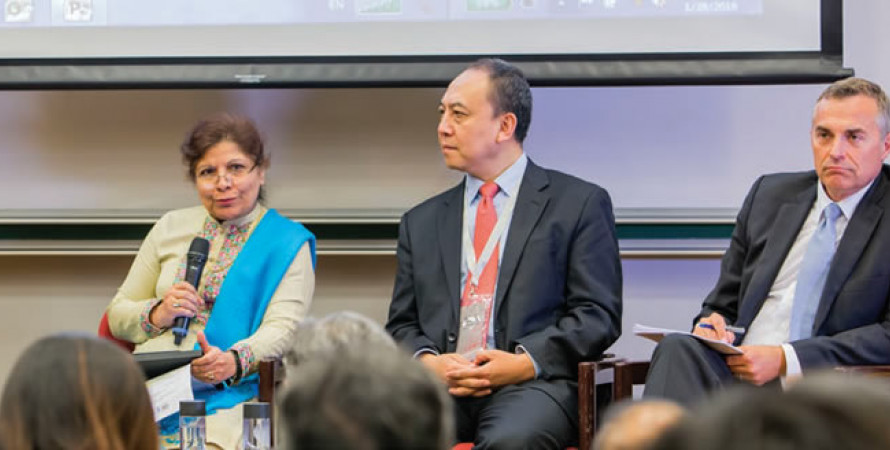 Michael Spence
Michael Spence
Michael Spence
Nobel Laureate Chairman, Advisory Board, Asia Global Institute
Shamshad Akhtar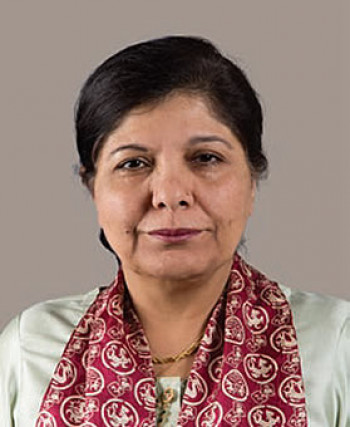
Shamshad Akhtar
Under-Secretary-General for Asia and the Pacific and Executive Secretary of ESCAP United Nations
Ye Qi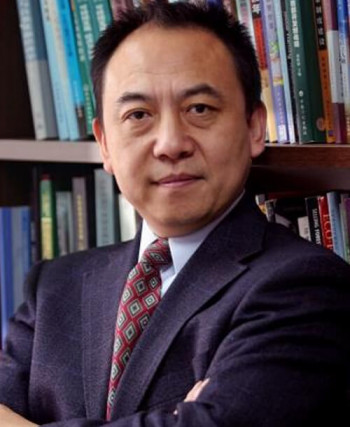
Ye Qi
Director, Brookings-Tsinghua Center for Public Policy
Douglas Beal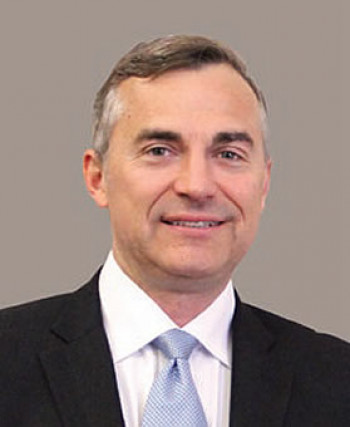
Douglas Beal
Global Leader, Economic Development, Boston Consulting Group“Growth-centric development thinking has now been replaced, at least in the membership corridors of the United Nations, by people-centric development. Intergenerational implications of factors such as how we live and consume our resources have also become more significant...”
United Nations Under-Secretary-General for Asia and the Pacific and Executive Secretary for ESCAP Shamshad Akhtar, Boston Consulting Group’s Global Leader for Economic Development Douglas Beal, and Brookings-Tsinghua Center for Public Policy Director Qi Ye discuss new ways of measuring economic and social performance outside of traditional metrics. Moderated by AGI Academic Council Chairman Michael Spence.
Measuring growth in GDP terms alone doesn’t cut it anymore
Viewing growth through the metric of GDP cannot be equated with well-being, as the story of growth goes beyond numbers and exclusive reliance on it will not serve a society’s development. While growth is necessary, it is not sufficient for the prosperity, happiness and well-being, of the world’s population.
Instead, quality of life should be an important consideration. It can be quantifiable through a composite of multiple factors which range from considering the environment in which we live, to what entitlements and empowerments we have, be it through quality education, health, etc. These factors cannot be equated with output generation, wealth accumulation or trends that move either up or down.
Growth-centric development thinking has now been replaced, at least in the membership corridors of the United Nations, by people-centric development. Intergenerational implications of factors such as how we live and how we consume our resources have also become more significant, particularly in light of growing challenges posed by systemic risks, shocks, disasters, and so on.
…But GDP still matters
We all know the GDP metric has several shortcomings: in some developing countries for instance, a straight, linear line to measure growth, such as SME production is used. So yes, it has several shortcomings, but it was never intended to measure development in the first place. The architects of GDP themselves have forewarned against equating GDP growth with well-being.
All things being said, there still is a need to have a system that can measure growth metrics. Rather than throwing out the GDP metric, it is better to continue modernizing and improving it.
There are new ways to assess growth
While methodologies differ, there are now alternative ways of measuring growth which include:
- The United Nations System of Environmental-Economic Accounting [SEEA], which was initiated by the United Nations Statistical Commission and consists of various parts. There is a central framework, which was adopted by the UN as the first international standard for environmental and economic accounting. There also exist other subsystems that monitor specific resources or sectors, including energy, water, fisheries, land, and ecosystems.
- The United Nations Sustainable Development Goals, which include 17 goals, in areas such as poverty, hunger, education, clean water and sanitation, and gender equality, amongst others. Progress on these goals are measured by some 230 indicators.
- Boston Consulting Group’s Sustainable Economic Development Assessment [SEDA], which measures 10 dimensions of well-being. These encompass economic-related dimensions, such as income, economic stability, and employment; investments, which include healthcare, education and infrastructure; and sustainability, which is a broad-based indicator that includes the environment, governance, gender equality, and income inequality.
Change won't be easy
Getting countries to move away from short-term demands to focus on a long-term agenda encompassing three pillars of economy, society and the environment is a big challenge.
The whole language of sustainable development is often foreign to people like finance ministers and development practitioners, because none are used to talking about sustainable development per se.
Even if economists can come to grips with sustainable development, the key to talking about this in organizations like the United Nations is how to look at the interdependence, interrelationship, and links between the three pillars of economy, society, and the environment. Real sustainable development should examine the tradeoffs, the implications involving one or the other. One of the problems we face is a lack of understanding in what integration of these three pillars really means.
Another big challenge is thinking about the short vs. the long term. Sustainable development cannot happen overnight: it’s a whole mindset and cultural change that needs to be harnessed.
Session 1b: The Economy, Sustainability and Human Development (Room 218)
 Miguel Perez
Miguel Perez
Miguel Perez
CEO, Ayannah
Christine Loh
Christine Loh
Chief Development Strategist, Institute for the Environment, Hong Kong University of Science and Technology
Noeleen Heyzer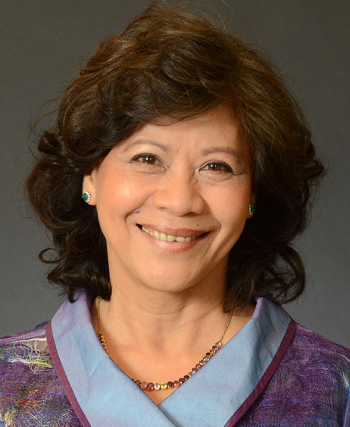
Noeleen Heyzer
Distinguished Fellow, Asia Global Institute
Y. C. Richard Wong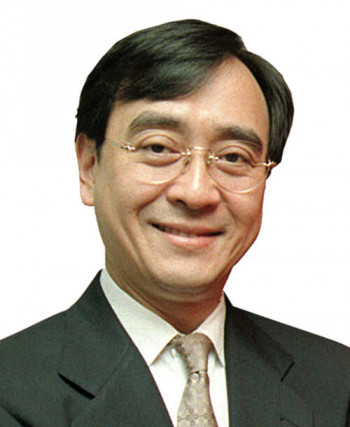
Y. C. Richard Wong
Chair of Economics & Philip Wong Kennedy Wong Professor in Political Economy, The University of Hong Kong“Is growth peoplecentered? Is it about the planet, because if we do not have a sustainable eco-system, we will have no people. At the same time, the third P is about prosperity. How are you going to have human development if you can’t generate wealth and you can’t have prosperity?”
“In the long run, no nation has really industrialized or modernized without an industrial base. Emerging markets have to develop some kind of modernization on an industrial base in order to generate jobs and domestic demand from a productive working class.”
AGI Distinguished Fellow Noeleen Heyzer, HKSAR Under Secretary for the Environment Christine Loh, and Ayannah CEO Miguel Perez discuss the need for economic development that is both sustainable and inclusive. Moderated by HKU Professor Y C Richard Wong.
Concern for people needs to lie at the heart of sustainable growth
When we begin to think about the world today, many of us think the economy is a big problem. And when you really break it down, it’s not just the economy that concerns us, our concerns are also about human development, the environment, and about whether we can be happy, and deal with our imbalances and anxieties.
This concern leads to the idea of sustainable development, which can be summarized as three Ps: people-centered, planet, and prosperity. Is growth people-centered? Is it about the planet, because if we do not have a sustainable eco-system, we will have no people. At the same time, the third P is about prosperity. How are you going to have human development if you can’t generate wealth and you can’t have prosperity?
The world needs to be concerned about shared prosperity because growth needs to be long-lasting and planet-sensitive. While we are very human-centric, we know from science, that the health and well-being of other living things are critical for our long-term sustainability.
The cost of ignoring sustainable development has a knock-on effect
We all know China's story: that fantastic economic developments of the last thirty years have lifted a lot of people out of poverty. But prosperity has come at a price, and it has triggered problems. So even if China embarks on a clean up, its drive for prosperity has left an indelible legacy. Today’s generation of young people growing up in China have had their health greatly compromised. As they get older, they may find that their cardiac functions and other bodily functions have been compromised. This tells you that unsustainable development has a long-term impact on the people’s health. Even if we were to disregard some of the other problems that society has seen, we can predict that in the next 20, 30, 40 years and as younger people in China get older, we are likely to see a very large, medical predicament.
The world needs a practical view of what people-centered sustainable growth could look like
We know things don’t work today, not just in the OECD countries and in the wealthy countries, but in the emerging markets as well. We have to have a view of how things should be in the future. In the long run, no nation has really industrialized or modernized without an industrial base. Emerging markets have to develop some kind of modernization on an industrial base in order to generate jobs and domestic demand from a productive working class. There is a need to develop clean light manufacturing, since manufacturing is one of the biggest labor generators. It brings employment and it brings people out of the poverty.
We will also have to agree that there are different paradigms for achieving the three P-s. How do we help people prosper while we take care of the planet?
Efficiency has not improved much outside of the private/business sector
After 200 years of economic growth, the world is seeing much better growth, but this growth is not equal. The living conditions of the world's poor have not changed, their incomes have not grown. This is happening, even as advancements allow the human population to live longer, more productive lives. The world is also seeing businesses and the private sector improve productivity levels. In fact, these levels are now so high that there is less of a need for a large labor force. And while this change is good for the bottom line, the threat of job losses is getting people worried.
In spite of these changes, the sectors which exist outside of the private business sector remain inefficient. Why haven’t they improved? Why haven’t they matched the private sector in terms of improving efficiency? There is a need to think about how we can make big strides in our society so that productivity also rises as well. These improvements will greatly help human capital.”
Session 2a: Advancing the Cause of Global Trade (Room G07)
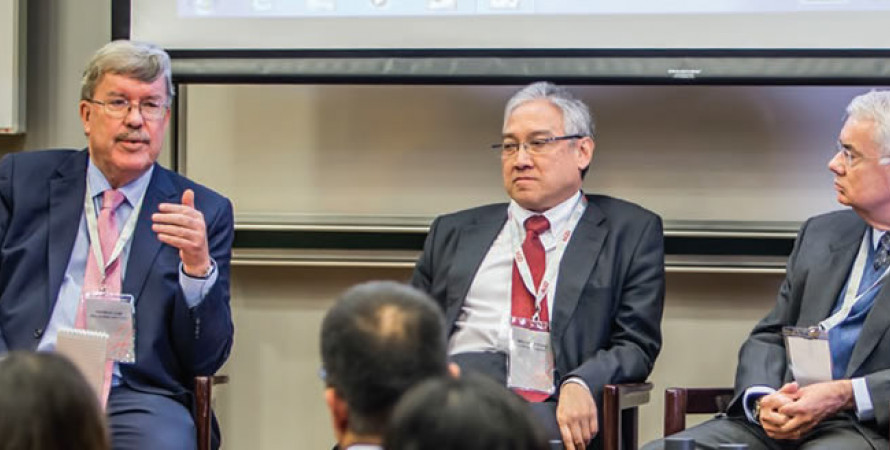 Patrick Low
Patrick Low
Patrick Low
AsiaGlobal Fellows Program Advisor, Asia Global Institute Visiting Professor, Faculty of Business and Economics, The University of Hong Kong
William K. Fung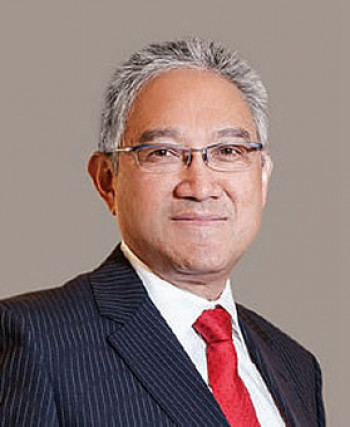
William K. Fung
Group Chairman, Li & Fung Limited
James Bacchus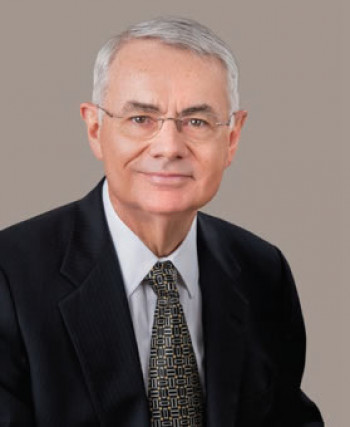
James Bacchus
Distinguished University Professor of Global Affairs and Director of the Center for Global Economic and Environmental Opportunity University of Central Florida
Carsten Hess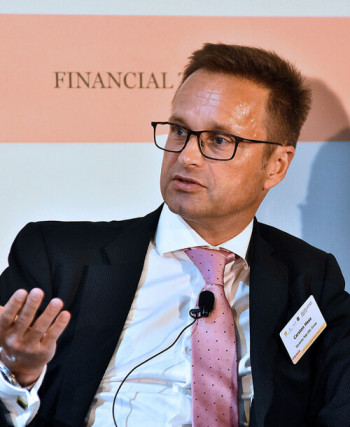
Carsten Hess
Vice President, Head of AP and EEMEA Corporate Public Policy, DHL“...people think we’ve done all we could in trade. Wrong. Much more can be done beyond tariffs and beyond the traditional issues within the context of trade rules, and which relates to issues such as intellectual property, competition policy, investment, services, and other areas of global concern. These should be on the global agenda”
“For developing countries, trade and the rationalization and production around the world was a major driver of growth for many years. And there are still many developing countries where this rationalization of trade, based on a laborintensive manufacturing model will continue to be the driver for many years to come.”
Former WTO Appellate Court Chairman James Bacchus, Li & Fung Group Chairman William K Fung, and Deutsche Post DHL Vice President and Head of AP and EEMA Corporate Public Policy Carsten Hess discuss radical developments that have changed the face of trade and globalization today. Moderated by AGI Fellow Patrick Low.
Trade has fallen off the agenda for a lot of people
Trade was a growth driver for many economies around the world, and now people think we’ve done all we could in trade. Wrong. Much more can be done beyond tariffs and beyond the traditional issues within the context of trade rules, and which relates to issues such as intellectual property, competition policy, investment, services, and other areas of global concern. These should beon the global agenda.
Within the United Nations Sustainable Development Goals, commercial matters are seen as an afterthought, even though business and commerce are essential to the success of the SDGs. Climate change is also an economic issue. There are still many developing countries whose rationalization of trade based on a labor-intensive manufacturing model is going to be a driver for many years to come, the most recent being Bangladesh and Vietnam. Yet developing countries may be their own worst enemies in the world of global trade because they have outsmarted themselves in the WTO over their frustrations with the bigger issues.
For developing countries, trade and the rationalization and production around the world was a major driver of growth for many years. And there are still many developing countries where this rationalization of trade, based on a labor-intensive manufacturing model will continue to be the driver for many years to come.
WTO has not demonstrated an effective negotiating capacity to date
The negotiating function of the WTO has yet to prove itself. While the WTO has been a good guardian of the rules and it has a pretty powerful mechanism for dispute settlement, those functions will start to lose their effectiveness without a negotiating function because these things are linked. The WTO is also failing because the mega-regionals are thriving. The WTO only works if geopolitics are mediated and there is a sense of common purpose, rather than competition.
... but preferential trade agreements are not the way to go
Today there are over 400 free trade agreements, which is a large number vis-a-vis the number of countries that are trading around the world. Each member of the World Trade Organization belongs to at least 12 preferential trade agreements. This can’t be the best way of doing business internationally, particularly if there are many different overlapping trade agreements, and if a government has to manage at least a dozen different trade regimes. Further, the world of preferentialism is less certain and less stable, because each time a new agreement is reached, it dilutes pre-existing ones.
The geopolitics involved in the mega-regionals are of some concern. For instance, the TPP and RCEP are counter-posed as a result of geopolitics. The fact with these agreements is that there will be exclusion; there will be some countries that won’t want to do business with others, so at the end of the day, this is fragmenting.
The world is changing fast, but regulators are not moving with the times
The world is demanding, customers are demanding, but legislation is not responding with the speed that the private sector needs. Governments haven’t done enough to support and promote multilateral trade. Bilateral trade imbalances are given too much emphasis. In a new world trade flows are everywhere, and parts are coming from everywhere.
Trade agreements move at a glacial pace. By the time multilateral deals are passed, they are probably irrelevant. Legislation also moves slowly and paradoxically, practitioners see that everything moves in a hurry. We worry about the internet, we worry about e-commerce, these are happening right now, but politicians are not responding to the urgency.
Session 2b: China's Belt and Road Initiative (Room 218)
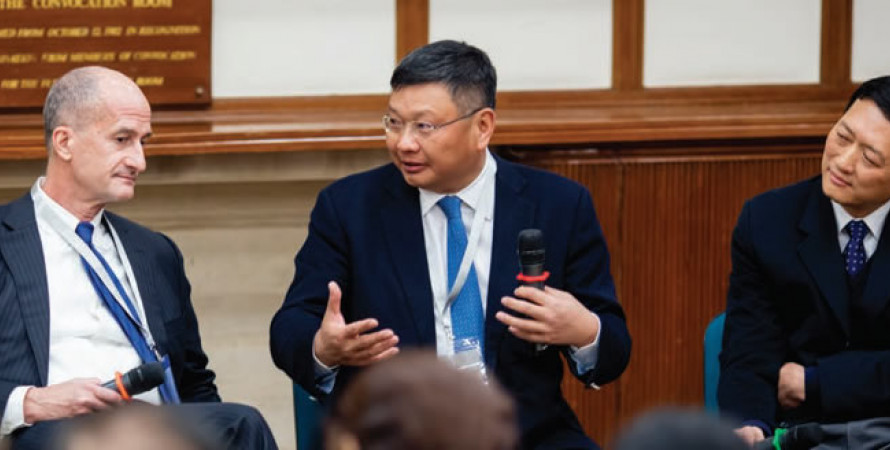 Victor K Fung
Victor K Fung
Victor K Fung
Chairman, Asia Global Institute
John Rice
John Rice
Vice Chairman, GE
Bing Xiang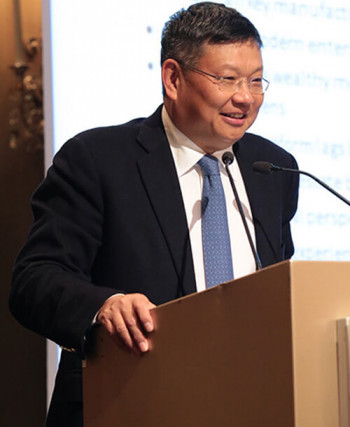
Bing Xiang
Founding Dean, Cheung Kong Graduate School of Business“If we look at China’s real economy, we see China has been relying on low costs, and it is now running out of comparative advantages. It faces a decision of either to move up, or move across borders, where cost structures are even lower. Forget about political implications – this is a must do.”
“The U.S. government made a serious mistake by not joining AIIB quickly, which is one of the ways in which OBOR will be carried out. There is now a risk that the U.S. will marginalize itself, and that there will be an overreaction.”
GE Vice Chairman John G Rice, AGI Interim Director Zhigang Tao, and Founding Dean of the Cheung Kong Graduate School of Business Xiang Bing discuss China’s Belt and Road Initiative, which aims to connect over sixty countries – four billion people, 1/3 of world GDP and consumption and recreates two Silk Road routes. Moderated by AGI Advisory Board Chairman Victor K Fung.
What is the Belt and Road Initiative is about?
When China's leaders unveiled the Belt and Road Initiative in 2013, the plan was positioned as a catalyst for cooperation between the 62 countries located along the historic Silk Road. The plan has two components: a Maritime Silk Road and the land-based Silk Road Economic Belt. Some perceive the Belt and Road Initiative as a way for China to continue developing its companies through a basic premise: the building of technology infrastructure.
Expect to see more concentrated economic activity around the countries along the Belt and Road Initiative's geographic region. But while the plan will benefit some, it will hurt others as well. In China, there is a current crisis in economic growth, and the SOEs need to take care of social stability. A diversity of ideas is needed to handle and achieve these two objectives.
The Initiative may not be perfect, but it is necessary
In the next five to twenty years, one predicted key change to the global economy will be its Sinification. If one thinks of the Chinese government as a corporation, the Belt and Road plan is one of the initiatives it has to undertake.
The plan is expected to boost the profile of China's currency, the RMB by internationalizing it. It allows China to continue developing its homegrown companies, especially since participation from Chinese companies, alongside multinational firms like GE, is a clear priority for the government. If we look at China’s real economy, we see China has been relying on low costs, and it is now running out of comparative advantages. It faces a decision of either to move up, or move across borders, where cost structures are even lower. Forget about political implications – this is a must do.
On a diplomatic front, new undertakings by the United States with global deals such as the TPP have left China feeling excluded. If China wants to extend its clout vis-a-vis the U.S. this is a plan that must be undertaken.
The Asia Infrastructure and Investment Bank (AIIB) is critical to the success of the Belt and Road Initiative
One reason driving the creation of the Asia Infrastructure and Investment Bank is to support the Belt and Road Initiative. But a more macro consideration is that the interests of the emerging markets are not being met by the current international monetary regime. China has expressed an interest in bringing some kind of balance to global governance and the AIIB is one instrument.
The U.S. government made a serious mistake by not joining AIIB quickly, which is one of the ways in which OBOR will be carried out. There is now a risk that the U.S. will marginalize itself, and that there will be an overreaction.
Still, it is important for the AIIB to cooperate with the Asian Development Bank, just as China should be actively encouraging the U.S. to get on board with the AIIB. This will allow over 100 countries access to do business with countries that benefit from the Belt and Road Initiative.
Reactions to the Belt and Road Initiative have been mixed thus far:
China is taking over the world.
It is a smart plan for a world that needs infrastructure – a project that is connecting capital to infrastructure projects. There isn’t enough of this.
It is a way for China to continue developing its companies. Participation from Chinese countries along OBOR, with companies like GE, is a clear priority for the government.
China’s economy has become globalized, and it is natural to expect Chinese companies to go global. Companies are doing well in lower value-add sectors (lighters, ties, etc.), not so much with higher value-add areas. Where can firms be truly competitive? The natural choice is for the government to support Chinese firms going global.
The Impact of Technology on Jobs and Growth
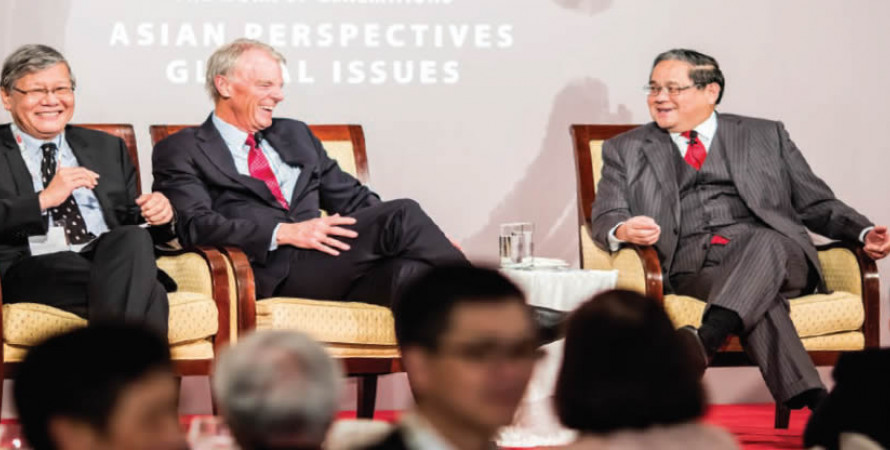 Andrew Sheng
Andrew Sheng
Andrew Sheng
Distinguished Fellow, Asia Global Institute
Michael Spence
Michael Spence
Nobel Laureate Chairman, Advisory Board, Asia Global Institute
Victor K Fung
Victor K Fung
Chairman, Asia Global Institute“There is a reasonable chance that this technological change and disruption will define this generation and the next.”
The AGI Trio, comprising Advisory Board Chairman Victor K Fung, Distinguished Fellow Andrew Sheng, and Academic Council Chairman Michael Spence discuss technology’s role as a game-changer in the job market
Innovation has displaced jobs in the past, but this time, things may be different
During the first Industrial Revolution, we saw manual work taken over by steam engines and machines and this phenomenon took out jobs at the lower end of the spectrum. Even so, after a difficult period, people found their way around and made it so that things began to work properly after a period of time.
Today we see job polarization. We see a decline in the middle-income range, and a rise in the upper 20 per cent or the lower 20 per cent of this scale. It’s a well-documented 20- to 30-year trend, coupled with rising inequality.
The jobs that are disappearing today are routine jobs – these are quantifiable tasks that don’t require any human agility, and which can be written down so that a machine can be told how to do the job, and the machine can do it. These routine jobs can be found across the white collar and blue collar spectra. The data is showing a downward trend in routine jobs. These jobs are actually disappearing – and the inflection point was in the year 2000.
What do those people do? We don’t know because they can’t be tracked as individuals, but it looks like we took away the routine jobs and that the labor pool moved to non-routine areas. Some of them may have ended up in the upper end of the distribution, others ended up in the lower end of the distribution. There is a reasonable chance that this technological change and disruption will define this generation and the next.
Is globalization to blame?
Globalization must have had some kind of an effect on the structure of our economies and the nature of work. For instance, even as jobs disappear in the U.S., we saw the economy grow by several tens of millions of new jobs. All of the job growth was generated in industries that were not subject to international competition. Manufacturing jobs have disappeared. So it looks as though a combination of globalization and labor-saving (automation) pushed workers out of middle-class jobs and pushed them one way or the other on the income spectrum. And we are now left with income polarization and unhappy people.
Technologists say we’re just beginning to see the capacity of machines to do things. Some are now asking what the limit to this technology is, and how to deal with the people that have been displaced by all this? What if it just keeps going and what if we have just seen the start?
This trend could change the growth model for developing countries
The initial stages of development in nascent economies depends very much on exported labor. Historically, this development takes place in a developing country’s garment industry. But if technology takes that stage of development from a developing country and if everything gets “reshored,” what happens to economic development in that country and in the rest of the world?
There is a need to change government’s model of bureaucracy
Every government has a bureaucracy, which can be defined as the friction that prevents the way a country operates from the 20th century to the 21st century. Businesses want to create jobs, but government prevents this from happening. As an example: there are SMEs that want to ship product overseas 24 hours a day, but governments customs officers don’t keep the same hours, so they prevent this 24-hour shipping cycle from happening. Essentially the government bureaucracy is still in the 19th century and has not caught up with the 21st century.
Technology can be harnessed as a force for change
It takes a different mindset to deal with this situation. Applications like WeChat have the ability to change the way rural suppliers like farmers and fishermen can work and communicate with the end consumer. There will be unemployment, there will be social revolutions but humans are adaptable. Rapid, low cost experimentation is a business solution to the technology and jobs question.
Sponsors
Co-Platinum Sponsors


Gold Sponsors
